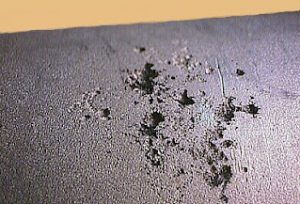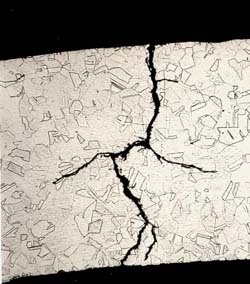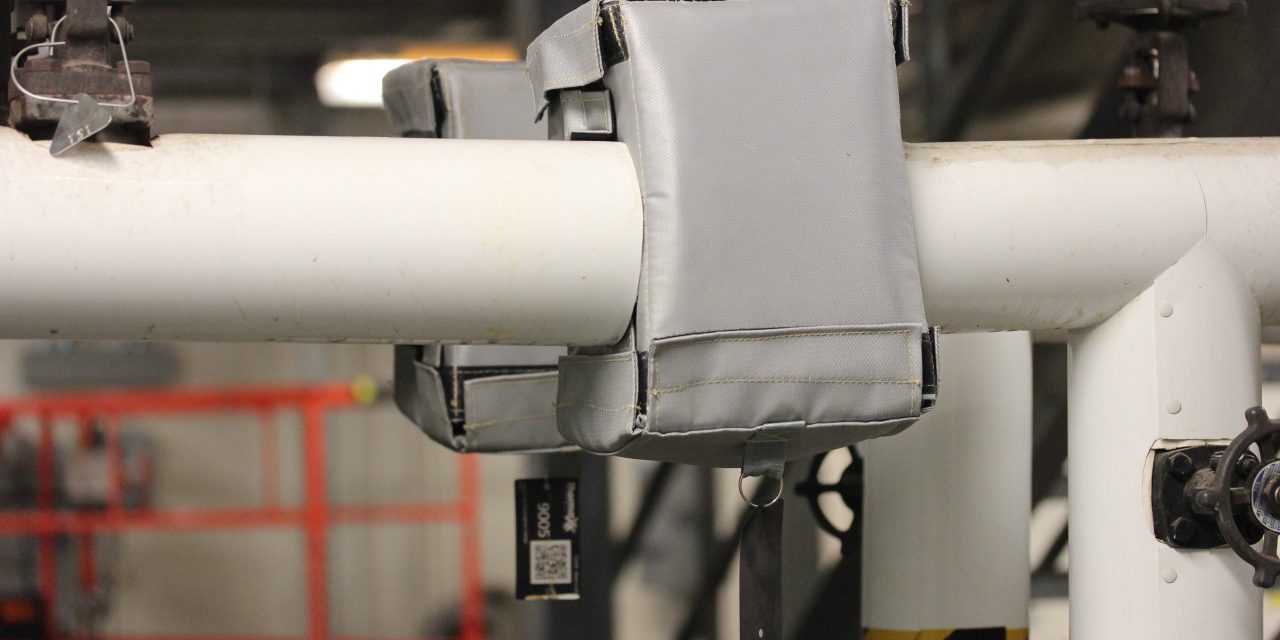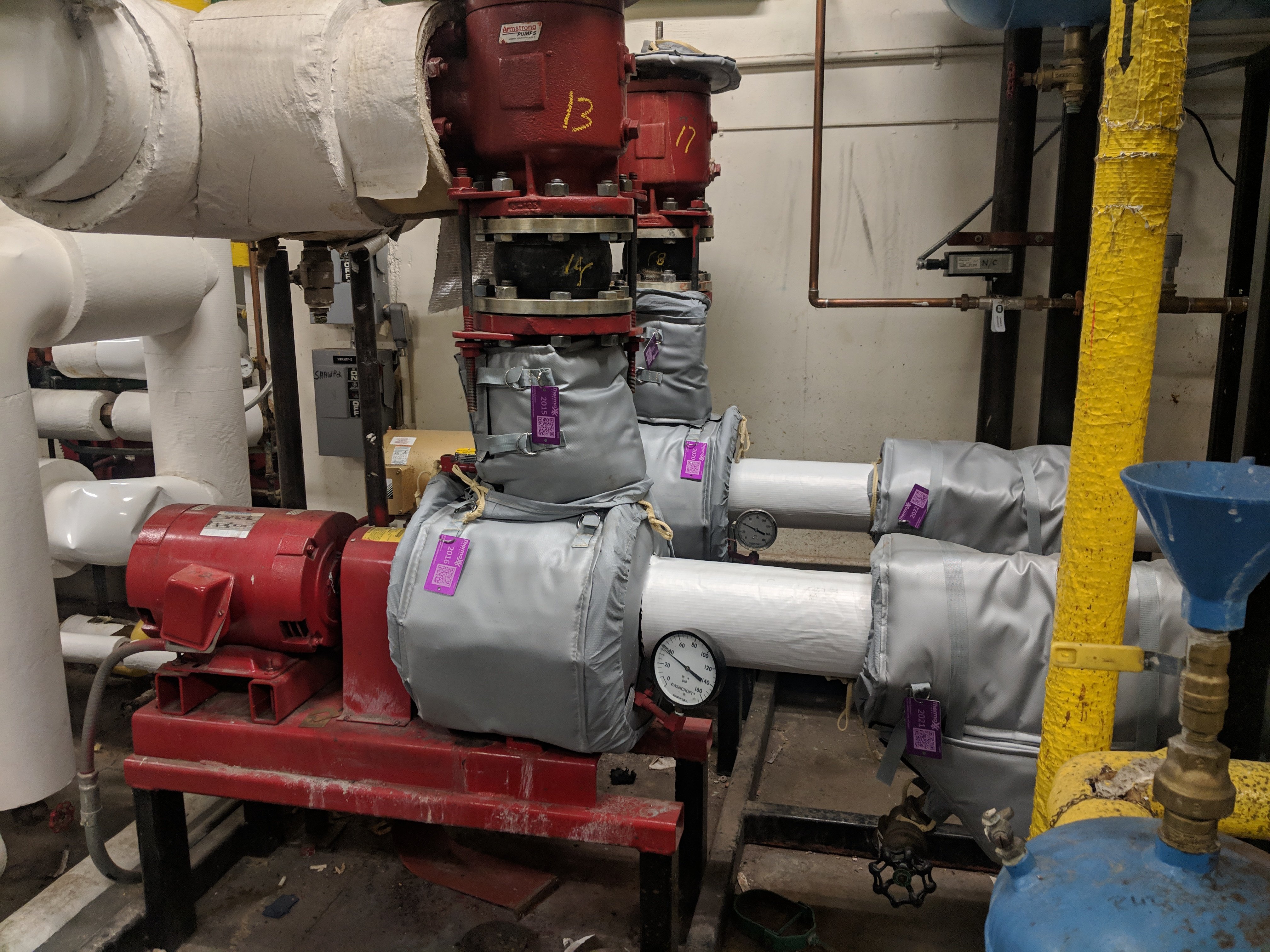Why You Should Inspect Stainless Steel Pipes
Common in factories and plants, stainless steel pipes and tubes are something we frequently see in our removable insulation installation calls. In these industrial settings, stainless steel pipes are frequently exposed to extreme temperatures and conditions; thus, insulating them is important to energy savings. Perhaps equally important is inspecting stainless steel pipes.

Corrosion under insulation (CUI) is a huge reason stainless steel pipes and tubes need to be inspected. Stainless steel contains more chromium than carbon steel, and the chromium forms an invisible, passive film of chromium oxide which creates the resistance to corrosion. Despite the fact that stainless steel is less corrosive than normal carbon steels, one must remember that stainless steel is corrosion resistant, not corrosion proof. The common shoptalk saying is “stainless steel is not stain proof – it just stains less.”
Austenitic stainless steel, AKA 300 series stainless steel, gets the most attention when it comes to CUI – due both to its popularity (approximately 70% of stainless steel produced is austenitic) and to the CUI issues associated with austenitic stainless steel piping systems. While CUI often causes uniform wall loss in carbon steel piping, CUI is generally extremely localized in stainless steel piping. Stay-in-place insulation already makes corrosion hard to detect and often stimulates corrosion; ultra-localized CUI is insidiously difficult to detect and compromising to structural integrity. CUI often manifests in stainless steel pipes and tubes as pitting corrosion or stress corrosion cracking.
Pitting Corrosion
Pitting occurs when corrosion eats small holes or cavities in the metal. Alloys like stainless steel that are resistant to corrosion due to a passivation layer are actually the most susceptible to pitting. If the passivation film is compromised and then attacked by corrosion, the corrosion will not spread on the metal’s surface but will instead penetrate inward. Pitting may cause stress cracking, and – if a pit occurs as a critical point – it can cause immense damage.
Stress Corrosion Cracking
Stress corrosion cracking is what its name implies. Stress corrosion cracking can be difficult to detect with the naked eye, and the fine, sometimes microscopic, cracks may penetrate into the steel and may spider or grow rapidly, potentially leading to catastrophic failure. Austenitic stainless steels are particularly susceptible to corrosion from chlorides, which includes chlorine, seawater (salt is sodium chloride), and many cleaning solutions.
Chloride corrosion induced stress cracking is more likely to occur in temperatures that promote evaporation (100 to 200°F) due to higher chloride deposits and moisture levels. In addition, many paints and insulating coatings contain chlorides, so be sure to choose your insulation carefully for stainless steel pipes! When a susceptible alloy like 300 series stainless steel is exposed to corroding chemicals like chlorides, the potential for cracking is much greater if the pipe is undergoing large amounts of stress. Stress corrosion cracks can start out tiny.
Stress corrosion cracks can start out tiny.
Susceptible Conditions
The insidious nature of these corrosion issues makes inspection of stainless steel piping quite prudent, especially in susceptible conditions. Such conditions include:
- Temperature (the most problematic temperatures depends on specific steel grade and exposure level to corrosive chemicals, but generally range from 50 to 300°F)
- Frequent contact with chlorides
- Compromised insulation
- Points where carbon steel and stainless steel are in contact with each other, and
- High moisture levels (water is always required for corrosion).
If piping in these conditions is under significant pressure or stress, the need for inspection is even greater. Also, different grades of stainless steel have different specific vulnerabilities to corrosion; for example, type 304 is prone to pitting in sea water.
Conclusion
Stainless steel piping requires different inspection methods than other types of piping. This is due both to the difficulty detecting the ultra-localized corrosion and to the fact that the different ferromagnetic properties of various grades of stainless steel require suitable inspection techniques. Our next article will overview corrosion detection methods for stainless steel.
Due to the severity of the problems caused by CUI in stainless steel piping and the difficulty detecting it, it is imperative you be familiar with this issue if you deal extensively with stainless steel piping.
The wise plant manager will analyze the risk of CUI based on the cost of failure, material, application, and environment (temperature, stress, chlorides and other chemicals, etc…). He or she should choose a suitable inspection method and develop an inspection schedule accordingly.

Thermaxx Jackets
Thermaxx Jackets was founded over 25 years ago with a single purpose: to help our clients save energy with removable insulation blankets when traditional stay-in-place insulation is not practical. Our dedication to this purpose has resulted in a long list of customers who have saved money thanks to Thermaxx Jackets! Combining expertise in heat loss, wireless monitoring, insulation design, and several other disciplines, we’ve become the #1 provider and fabricator of removable insulation jackets and covers. The Thermaxx Sales and Service teams are experienced and trained to provide clients with the most timely and cost-effective solution.
Categories
- removable insulation
- thermaxx jackets
- energy savings
- savings
- energy efficiency
- safety
- pipe insulation
- energy
- case study
- insulation materials
- thermal insulation
- heat loss survey
- heat loss
- energy loss
- hot insulation
- fiberglass
- installation
- steam
- New York
- custom insulation
- NYC Case Study
- boiler
- university
- Connecticut
- reusable insulation





